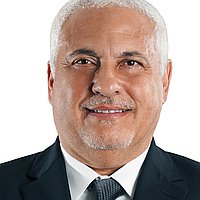- Home »
- Treatments & Services »
- Diagnostic Imaging (Radiology) »
- MRI/ MRA
LARKIN IMAGING CENTERS
MRI / MRA
What is an MRI scan?
Magnetic resonance imaging (MRI) is a method of looking inside the body. Instead of X-rays, the MRI scanner uses magnetism and radio waves to produce remarkably clear pictures of your head, spine, or other parts of your body. An MRI scanner consists of a strong magnet with a radio transmitter and receiver. The MRI produces soft-tissue images and is used to distinguish normal, healthy soft tissue from pathologic tissue.
Depending on what information your doctor needs, the MRI scan may require the use of a contest-agent given intravenously to assist in visualization of certain structures in your body.
Preparing for an MRI?
No special preparation is needed prior to the exam, unless your doctor has given you other instructions. You will be asked to complete a safety screening form and answer questions pertaining to your medical history. Please wear loose clothing without zippers or metallic parts.
Be sure to remove all:
- jewelry
- watches
- hairpins
- glasses
- wallets
- and other metallic objects
What will happen?
After you have removed all metal objects, the technologist will position you on a special table, and the table will then slide into the scanner. MAGNETOM Symphony’s feet-first functionality allows that your head stays outside the magnet during most examinations – with the exception of head or neck scans of course. You will be able to communicate with the technologist during the scan.
For clear pictures, you will be asked to hold very still and relax. In some cases, you will be asked to hold your breath. Any movement, especially of your head or neck (even moving your jaw to talk) during the scan will seriously blur the pictures. While the machine is taking your pictures you will hear rapidly repeating, thumping noises coming from the walls of the scanner. For additional comfort earplugs may be provided. During this time, you should breath quietly and normally but otherwise refrain from any movement, coughing or wiggling. When the thumping noise stops, you must refrain from changing your position or moving about. This whole procedure will usually be repeated several times, and the entire exam ordinarily takes between 15 to 30 minutes to complete.
- TMJ (Temparo-Mandibular Joint)
- MRCP
- BRAIN
- PITUITARY GLAND
- IAC’s (INTERNAL AUDITORY CANAL)
- ORBITS
- NECK-SOFT TISSUE
- PARANASAL SINUSES
- FACE
- CERVICAL SPINE
- LUMBAR SPINE
- THORACIC SPINE
- CHEST
- ABDOMEN
- BREAST
- SHOULDER
- ELBOW
- WRIST
- HIP
- KNEE
- ANKLE
- FOOT
- HAND
- UPPER EXT. (NON JOINT)
- LOWER EXT. (NON JOINT)
- UPPER EXT. (JOINT)
- LOWER EXT. (JOINT)
- HEAD (CIRCLE OF WILLIS)
- NECK (CAROTID)
- CHEST (THORACIC AORTA)
- SPINE
- ABDOMEN (RENAL/ABDOMINAL AORTA)
- PELVIS (ILIACS)
- UPPER EXTREMITY
- LOWER EXTREMITY (RUN OFF)
MRI is a non-invasive and safe test. An MRI works with a strong magnet and radio waves. You need to tell us if any of the following applies to you or the person that accompanies you into the exam room:
- Aneurysm clip(s)
- Cardiac pacemaker
- Implanted cardioverted defibrillator (ICD)
- Electronic implant or device
- Magnetically-activated implant or device
- Neurostimulation system
- Spinal cord stimulator
- Cochlear implant or implanted hearing aid
- Insulin or infusion pump
- Implanted drug infusion device
- Any type of prosthesis or implant
- Artificial or prosthetic limb
- Any metallic fragment or foreign body
- Any external or internal metallic object
- Hearing aid
Same day appointments, call us today.
Facilities
MRI/ MRA | Larkin Health Please Visit or Call The Following Facilities.
Physicians
Physicians Treating MRI/ MRA | Larkin Health.



